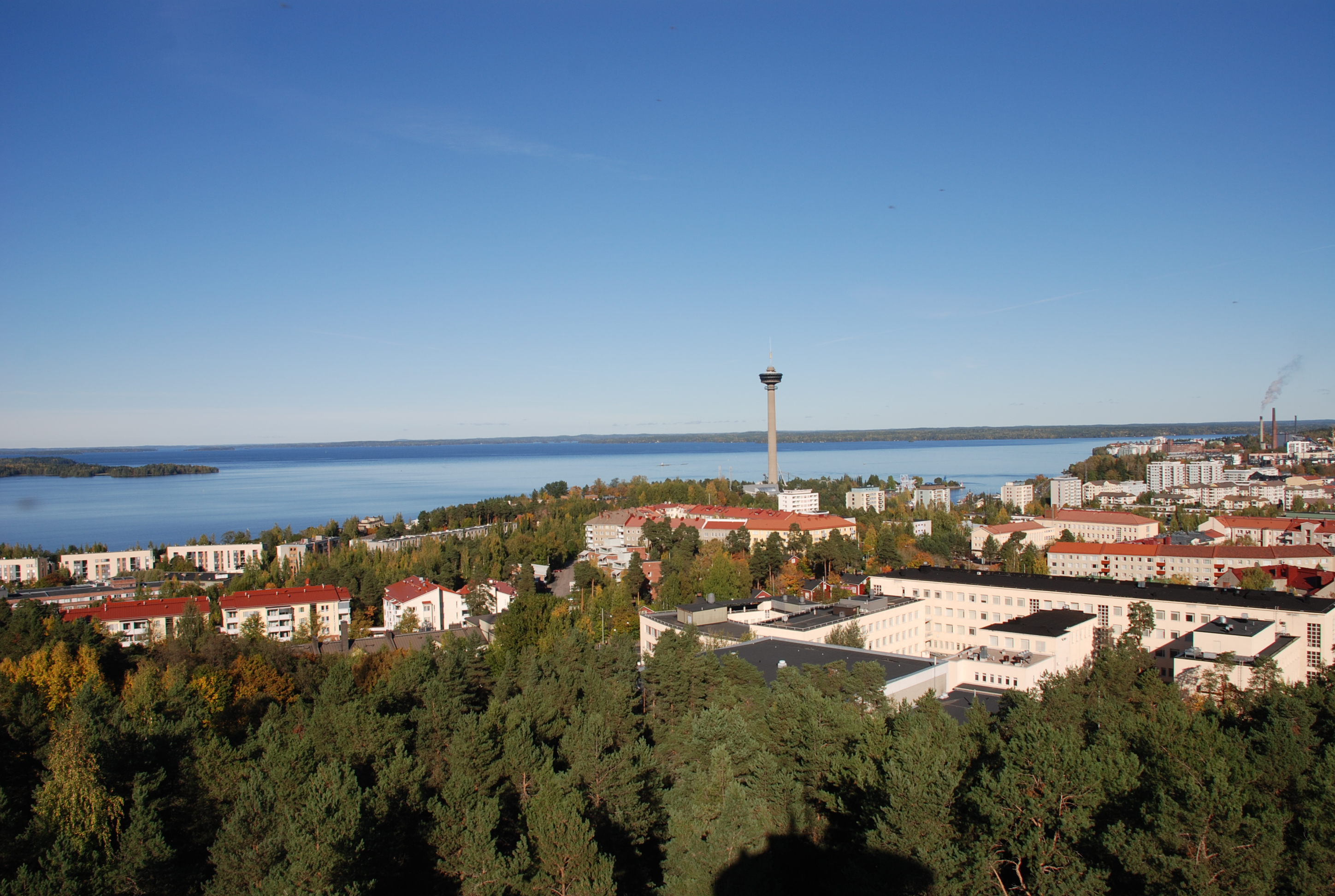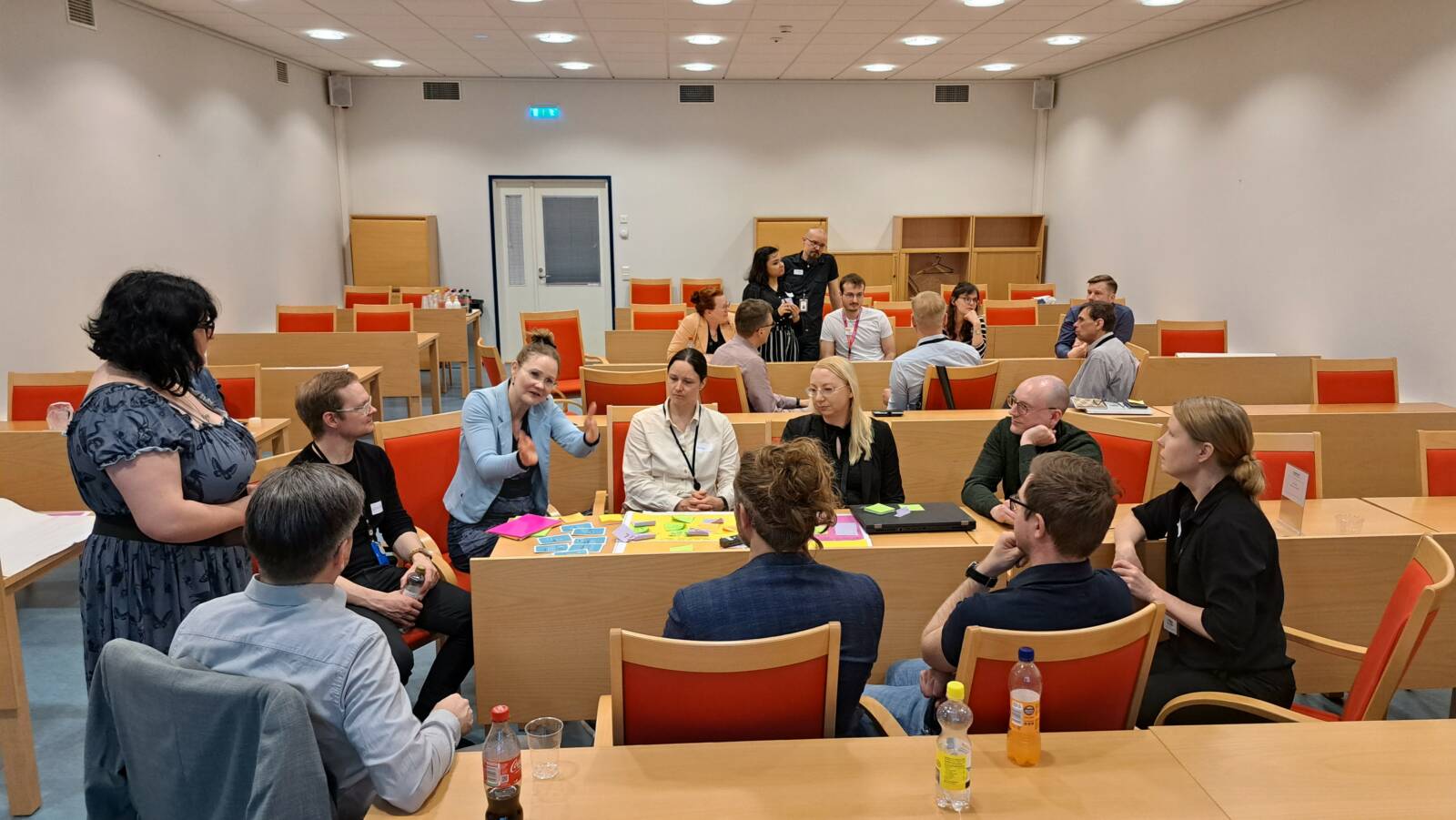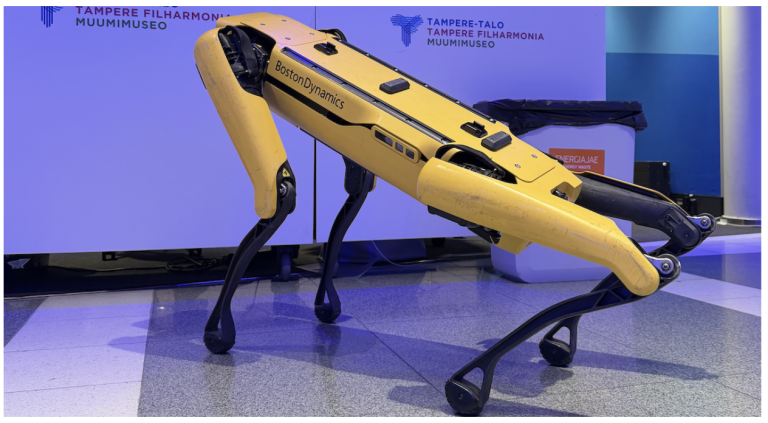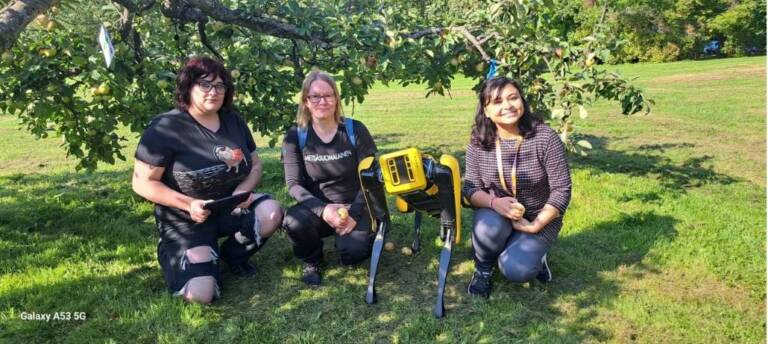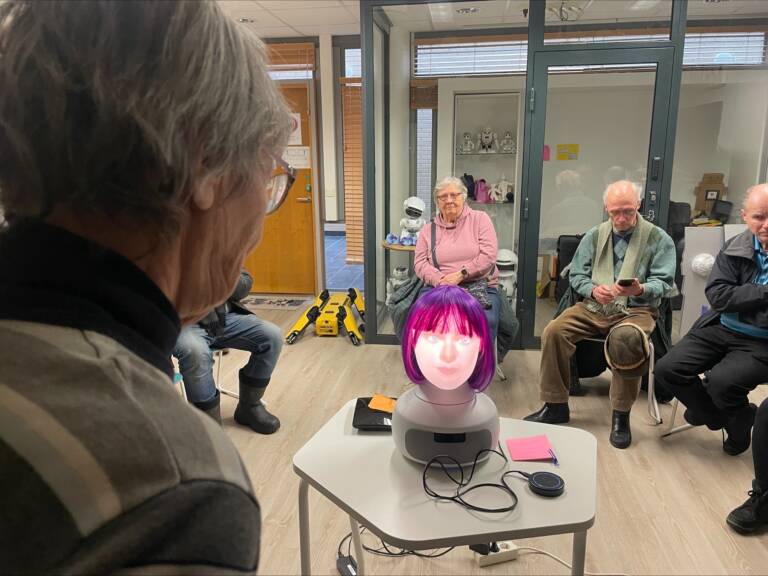
Continuing the Mixed Fleet project story, which started by introducing the Tampere University wp2 about the work towards ”Seamless Collaboration Between Mobile Work Machines and Humans”, it is now time to introduce TAU wp 1. Wp 1 approaches Mixed Fleet contexts from the perspective of human-centered design. It focuses on designing smooth and comfortable human-machine interaction in different Mixed Fleet environments. We are three researchers in this work package, mentioned above. We utilize human-centered design methods in our work, such as co-design workshops, field studies, concept design etc. This project work contributes to two doctoral research journeys. Next, we present one of our very first collaborative activities in this project: the co-design workshop with the Mixed Fleet members about designing human-machine interaction in the warehouse context. The co-design workshop was arranged in collaboration with Mitsubishi Logisnext Europe. Mitsubishi Logisnext Europe is a technology-driven designer and manufacturer of logistic solutions with a portfolio of forklift trucks, automation systems, and related solutions and services. Logisnext Solutions’ AGV operations are known as Rocla AGV Solutions and operate globally with highly skilled staff and 40+ years of experience.
The co-design workshop began with a captivating presentation by Apa, one of the doctoral researchers, who set the stage for an engaging and insightful session. About 20 Mixed Fleet consortium participants were then divided into two groups, with Apa and Vero leading the discussions, while Aino skillfully managed time to ensure smooth proceedings. Co-design canvases were also used to structure the discussions and add notes.
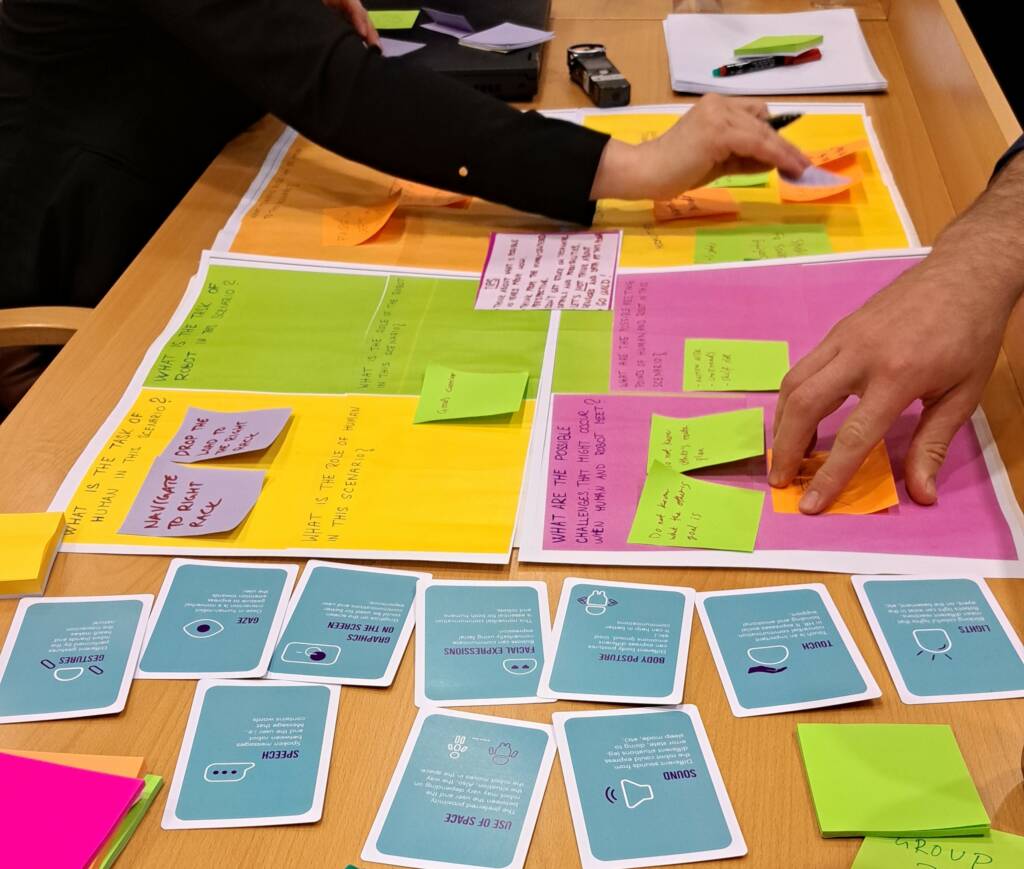
Engaging in dynamic group discussions, the participants explored various scenarios involving human workers and AGVs. They pondered over how humans should interact with AGVs to ensure efficiency and safety, relying on intuitive signals. Discussions also revolved around how AGVs should communicate with each other to optimize workflow and prevent collisions. Moreover, participants delved into the idea of adapting warehouse traffic rules, contemplating whether basic car traffic rules could be repurposed and what new regulations might be necessary.
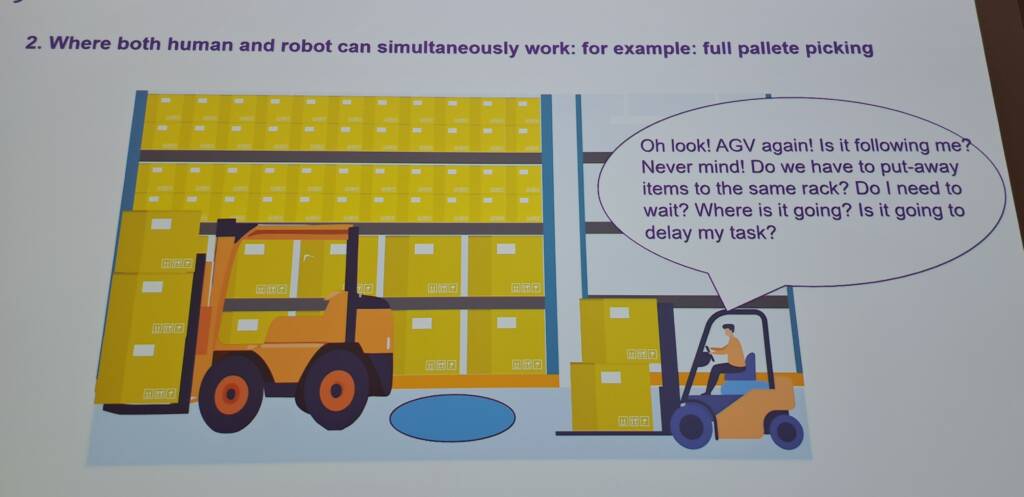
A particularly lively topic was about giving AGVs personalities. Participants debated the idea of assigning names and unique traits to these machines, sparking excitement and creativity. Additionally, there was enthusiasm around incorporating gamified elements to enhance the waiting experience, making it more engaging and enjoyable for human workers.
As we chatted, we started imagining funny situations. One idea that made us laugh was thinking about what an AGV would do if it found a dead rat in the warehouse. We joked about whether it would try to figure out what happened to the rat or just avoid it altogether. Or if it would cause more issues and would block the AGV’s path. It was a silly moment that helped lighten the mood and remind us to keep things fun during our research.
In the session, Apa presented to the participants a surprise task using special lights, each with its own message. The participants were excited to see this and correctly identified one of the lights as representing an “active” or “positive” mood. This activity added fun to the session and showed how people react to visual cues in practical situations.
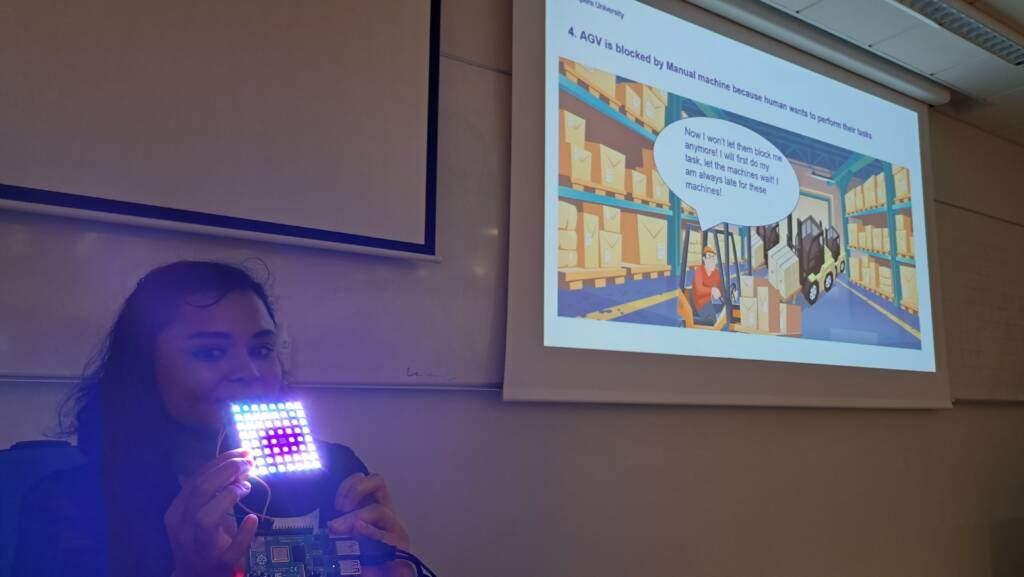
Throughout the session, discussions were not only interesting but also intense, with participants passionately sharing their views on integrating AGVs into everyday operations. As the day ended, everyone gathered to reflect on the insights gained. The researchers left with heads full of new and fresh ideas, thanks to the enthusiastic participation and innovative thinking of the Järvenpää attendees.
The Mixed Fleet project is paving the way for a future where humans and robots work side by side seamlessly. This session was a vital step toward understanding how to make that future a reality. Stay tuned for more updates as the research continues to unfold!
By Veronika Žigraiová, Aino Ahtinen, Aparajita Chowdhury

